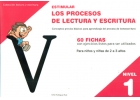Tema quincena | Detección | Orientación | Interdisciplinario |
Profesionales | Glosario | Patologías | Actualidad
Neuroacustica y Biosincronizacion, las bases perceptivas del lenguaje. (Parte V)
La privación auditiva ocurre a menudo cuando un oído no está adaptado con un audífono durante un largo período de tiempo, de forma que cuanto antes consideres la posibilidad de llevar dos audífonos, mayores son las posibilidades de minimizar este riesgo.Sacas más provecho de los sonidos que te rodean. Imagina que estás escuchando tu programa favorito en estéreo. Este tiene dos amplificadores y dos altavoces para dar a la música y a las voces su profundidad natural.
¿Por qué dos es mejor que uno?
Aunque probablemente no sea algo que te plantees habitualmente, lo cierto es que el cerebro forma parte integral de tu audición.
El cerebro necesita información de ambos oídos para poder indicarnos de dónde provienen los sonidos. Piensa por ejemplo en el ruido de la bocina de un coche. Tus oídos te advierten del peligro enviando señales sonoras a tu cerebro. Y en una fracción de segundo tu cerebro compara la información recibida de ambos oídos, como la potencia e intensidad de la onda sonora y el tiempo que ha tardado en llegar hasta tu oído. Esto te dice instantáneamente en qué dirección viene el coche y a qué distancia está. A este proceso se le llama localización del sonido.
¿De dónde viene el sonido?
La distancia física entre nuestros oídos es lo que nos permite localizar los sonidos que nos rodean. Por ejemplo, el sonido de la bocina de un coche que se encuentra a tu izquierda llega hasta tu oído izquierdo una fracción de segundo antes de llegar a tu oído derecho y con mayor intensidad. Por eso sabes inmediatamente que el coche se aproxima rápidamente desde el lado izquierdo. Esta es la forma que tiene la naturaleza de hacer que nos sintamos seguros y cómodos en las situaciones cotidianas.
Si no lo usas, lo pierdes
Si sólo utilizas el audífono en un oído, el cerebro puede perder gradualmente parte de su capacidad para procesar la información sonora del oído que no está siendo ayudado. Esto se conoce como privación auditiva. La privación auditiva ocurre a menudo cuando un oído no está adaptado con un audífono durante un largo período de tiempo, de forma que cuanto antes consideres la posibilidad de llevar dos audífonos, mayores son las posibilidades de minimizar este riesgo.
Comprender a las personas en entornos ruidosos
Con el ruido de fondo resulta difícil seguir lo que dicen las personas. Si no oyes por igual con los dos oídos, no podrás percibir qué sonidos vienen de lejos y cuales pertenecen al ruido de fondo y por tanto, son menos relevantes. Esto se debe a que el cerebro necesita información de ambos oídos para poder separar los sonidos eficazmente. Imagínate una situación cotidiana, como puede ser una conversación durante una cena. Tú tratas de hablar con la persona que tienes a tu lado, pero el resto de la familia
También está hablando, y el ruido de fondo te impide no sólo oír con claridad, sino también y especialmente entender lo que te están diciendo.
Mayor riqueza de sonidos
Si oyes por igual con ambos oídos, los sonidos se escuchan con mayor comodidad. No tienes que esforzarte y percibes los sonidos con claridad y riqueza de detalles. En otras palabras, sacas más provecho de los sonidos que te rodean. Imagina que estás escuchando tu programa favorito en estéreo. Este tiene dos amplificadores y dos altavoces para dar a la música y a las voces su profundidad natural. Pero si sólo funciona uno de los altavoces y uno de los amplificadores, los sonidos se vuelven planos. Si se lleva un solo audífono debiendo llevar dos, es posible que los sonidos se perciban de la misma manera. Afortunadamente, tu audiologo puede solucionar esto adaptando un audífono en cada oído.
Referencias
Adams, H. B., A Case Utilizing Sensory Deprivation Procedures. In L. P. UlIman & L. Krasner, Holt, Rinehart & Winston, Case Studies in Behavior Modification. New York, 1965.
Adrian, E. D. & Yamagiwa, K., "The Origin of the Berger Rhythm." Brain, 58, 323-351, 1935.
Anthony, M., Briggs, N. Computational Learning Theory, An Introduction. Cambridge University Press, 1992.
Atwater, F. H., "The Monroe Institute-s Hemisync Process: A Theoretical Perspective." Faber, Va, Monroe Institute, 1988.
Baars, B.J., A Cognitave Theory of Consciousness, Cambridge University Press, 1988.
Bandler, R., "Using Your Brain--For a Change." Moab, UT: Real People Press, 1985.
Barber, T. X., "Experiments in Hypnosis." Scientific American, 196, 54-61,1957.
Barto, Andrew G., Richard S. Sutton Landmark Learning: An Illustration of Associative Search, Biological Cybernetics , 42: 1-9, 1991.
Beck, F., Eccles, J.C. Quantum Aspects of Consciousness and the Role of Consciousness. Proc. Nat. Acad. Sci., 89, 11357- 61.
Bermer, F., "Cerebral and Cerebellar Potentials." Physiological Review, 38, 357-388, 1958.
Blakemore, C. and Greenfield, S. (Ed.) Mindwaves: Thoughts on Intelligence, Identity and Consciousness. Blackwell, Oxford, 1987.
Boden, M.A. The Creative Mind, Myths and Mechanisms. Wiedenfeld and Nicolson. London, 1990.
Bremer, F., "Physiology of the Corpus Callosum." Proceedings of the Association of Research, on Nervous Disorders, 36, 424-448, 1958.
Brackopp, G. W., Review of Research on Multi-Modal Sensory Stimulation With Clinical Implications and Research Proposals, 1984, Unpublished manuscript--see Hutchison, 1986.
Budzynski, T., "Some Applications of Biofeedback-Produced Twilight States." In D. Shapiro, et al, 1973. Biofeedback and Self-Control, 1972. Chicago: Aldine-Atherton, 1972.
Budzynski, T. H., "Biofeedback and the Twilight States of Consciousness." In G.E. Schwartz, 1976 and D. Shapiro, Consciousness and Self-Regulation, Vol.1, New York: Plenum Press.
Budzynski, T. H., "Tuning-In on the Twilight Zone." Psychology Today, August,1977.
Budzynski, T. H., "Brain Lateralization and BiofeedBack."In B. Shapin & T. Coly, Brain/Mind and Parapsychology. New York: Parapsychology Foundation, 1979.
Budzynski, T. H. (1981). "Brain Lateralization and Rescripting." Somatics, 3,1-10, 1981.
Budzynski, T. H., "Clinical Applications of Non-drug Induced States." In B. Wolman & M. UlIman, HandBook of States of Consciousness. New York: Van Nostrand-Reinhold, 1986.
Budzynski, T. H., "Hemispheric Asymmetry and REST." In Suefeld, P. Turner, J. W., Jr. & Fine, T. H., Restricted Environmental Stimulation, New York: Springer-Verlag, 1990
Cade, C. M. & Coxhead, N., "The Awakened Mind: BiofeedBack and the Development of Higher States of Consciousness." New York: Delacorte Press, 1979
Cheek, D., "Short Term Hypnotherapy for Fragility Using Exploration of Early Life Attitudes." The American Journal of Clinical Hypnosis, 18, 75-82, 1976
Chomsky, N. Syntactic Structures. The Hague, Mouton, 1957.
Churchland, Patricia Smith. Neurophilosophy: Towards a Unified Science of the Mind-Brain, MIT Press, 1986.
Clark, S. A. et al: Receptive Fields in the Body-Surface Map in Adult Cortex Defined by Temporarily Correlated Inputs, Nature, 332:444-48, 31 March 1988.
Crick, F., Mitchison, G. The Function of Dream Sleep, Nature, 304:111-14, 1983.
Davidson, R. J., Ekman, P., Saron, C. D., Senulis, J. A., & Friesen, W. V., "Approach-Withdrawal and Cerebral Asymmetry: Emotional Expression and Brain Physiology." Journal of Personality and Social Psychology, 58, 330-341, 1990.
Deikman, A., "Deautomatization and the Mystic Experience." In C. T. Tart (Ed.), Altered States, of Consciousness. New York: John Wiley & Sons, 1969.
Deikman, A., "Bimodal Consciousness." Archives of General Psychiatry, 25,481-489, 1971.
Donker, 0. N.J., Nijo, L., Storm Van Leeuwen, W. & Wienke, G., "Inter-hemispheric Relationships of Responses to Sine Wave Modulated Light in Normal Subjects and Patients."
Electroencephalography and Clinical Neurophysiology, 44, 479-489, 1978.
Evans, F. J., Gustafson, L. A., O-Connell, 0. N., Orne, M. T. & Shor, R. E., "Response During Sleep With Intervening Waking Amnesia." Science, 152, 666-667, 1966.
Evans, F. J., Gustafson, L. A., O-Connell, 0. N., Orne, M. T. & Shor, R. E.,. "Verbally Induced Behavioral Response During Sleep." Journal of Nervous and Mental Disease, 1,1-26, 1970.
Evans, C. & Richardson, P. H., "Improved Recovery and Reduced Postoperative Stay After Therapeutic Suggestions During General Anaesthetic." Lancet, 2, 491, 1988.
Felipe, A., "Attitude change during interrupted sleep." Unpublished Doctoral Dissentation. Yale University, 1965.
Foster, D.S., "EEG and Subjective Correlates of Alpha Frequency Binaural Beats Stimulation Combined With Alpha BiofeedBack." Ann Arbor, Ml: UMI, Order No.9025506, 1990.
Foulkes, D. & Vogel, G. (1964). "Mental Activity At Sleep Onset." Journal of Abnormal Psychology, 70, 231-243, 1964.
Glicksohn, J., "Photic Driving and Altered States of Consciousness: An Exploratory Study." Imagination, Cognition and Personality, 6,167-182, 1986.
Green, E. E., Green, A. M., "On the meaning of the transpersonal: Some metaphysical perspectives." Journal of Transpersonal Psychology, 3, 27-46, 1971.
Green, E. E., & Green, A. M., "Biofeedback and States of Consciousness." In B. B. Wolman & M. UlIman. Handbook of States of Consciousness. New York: Van Nostrand Reinhold, 1986.
Harding, G. F. & Dimitrakoudi, M. "The Visual Evoked Potential in Photosensitive Epilepsy." In J. E. Desmedt, Visual Evoked Potentials in Man: New Developments. Oxford: Clarendon, 1977.
Henriques, J. B. & Davidson, R. J., "Regional Brain Electrical Asymmetries Discriminate Between Previously Depressed and Healthy Control Subjects." Journal of Abnormal Psychology, 99, 22-31, 1990.
Hoovey, Z., Heinemann, U. & Creutzfeldt, O., "Inter-hemispheric Synchrony of Alpha Waves." Electroencephalography and Clinical Neurophysiology, 32, 337-347, 1972. Hopefield, J. J., Feinstein, D.I., and Palmer, R.G. "Unlearning" Has a Stabilizing Effect on Collective Memories, Nature, 304:158-59, 14 July 1983.
Hutchison, M., Megabrain. New York: Beech Tree Books. William Morrow, 1986.
Hutchison, M., "Special issue on sound-light." Megabrain Report: Vol 1, No.2. 1990.
Iamblichus. "The Epistle of Porphyry to the Egyptian Anebo." In Iamblichus on the Mysteries of the Egyptians, Chaldeans, and Assyrians. Trans. by Taylor, T. London: B. Dobell, and Reeves & Turner, 1895.
Janet, P., L-Automatisme Psychologique. Paris: Alcan, 1889.
Koestler, A., The Act of Creation. London: Pan Books, 1981.
Kooi, K. A., Fundamentals of Electroencephalography. New York: Harper & Row, 1971.
Kubie, L., "The Use of Induced Hypnagogic Reveries in the Recovery of Repressed Amnesic Data." Bull. Menninger Cilnic, 7,172-182, 1943.
Lankton, S. R., & Lankton, C. H., The Answer Within: A Clinical Framework of Ericksonian, Hypnotherapy. New York: BruneriMazel, 1983.
Lehky, Sidney R., and Sejnowski, Terrence J. Network Model of Shape-Form-Shading: Neural Function Arise From Both Receptive and Projective Fields, Nature, 333:452-54, 2 June 1988.
Leman, K. & Carison, R., Unlocking the Secrets of Your Childhood Memories. Nashville: Thomas Nelson, 1989.
Lilly, J. C., Programming and Meta Programming in the Human Bio-computer. New York: Julian, 1972.
Lynch, G., and Baudry, M. The Biochemistry of Memory: a New and Specific Hypothesis, Science, 224:1057-63,1984.
Lubar, J. F., "Electroencephalographic Biofeedback and Neurological Applications." In J. V. Basmajian, BiofeedBack: Principles and Practice, New York: Williams & Wilkins, 1989.
Mavromatis, A. Hypnagogia: The Unique State of Consciousness Between Wakefulness and Sleep. New York: Routledge & Kegan Paul, 1987.
Miller, E. E., Software for the Mind: How to Pprogram Your Mind for Optimum Health and Performance. Berkeley, CA: Celestial Arts, 1987.
Moscu, K. I. & Vranceanu, M., "Quelques Resultats Concernant L-action Differentielle des Mots Affectogenes et Nonaffectogenes Pendant le Somneil Naturel." In M. Bertini (Ed.), Psicofisiologia del Sonno a del Sogno. Milan: Editrice vitae e Pensiero, 1970.
Moses, R. A., Adler-s Physiology of the Eye: Clinical Applications. St. Louis: Mosby, 1970.
Nemiah, J. C., The Unconscious and Psychopathology. In S., & Meichenbaum, D. New York: John Wiley & Sons, pp.49-87, 1984.
Oster, G., "Auditory Beats in the Brain." Scientific American, 229, 94-102, 1973.
Peniston, E.G. & Kulkowski, P. J., "Alpha-Theta Brainwave Training and Beta Endorphin Levels in Alcoholics." Alcoholism, 13, 271-279, 1989.
Richardson, A. & McAndres, F., "The Effects of Photic Stimulation and Private Self-consciousness on the Complexity of Visual Imagination Imagery." British Journal of Psychology, 81,381-394, 1990.
Rosenfield, Isreal, Neural Darwinism: A New Approach to Memory and Perception, The New York Review of Books, 9 October 1986.
Rossi, E. L., The Psychobiology of Mind-Body Healing. New York: W. W. Norton, 1986.
Rubin, F., Current Research in Hypnopaedia. London: MacDonald, 1968.
Rubin, F., "Learning and Sleep." Nature, 226, 447, 1970.
Schacter, D. L., "EEG Theta Waves and Psychological Phenomena: A Review and Analysis." Psychology, 5, 47-82, 1977.
Schultz, J. & Luthe, W. (1959). Autogenic Training: A Psychophysiological Approach in Psychotherapy. New York: Grune & Stratton., 1959.
Sejnowski, T.J., Dienker, P.K., and Hinton, G.E. Learning Symmetry Groups with Hidden Units: Beyond the Perception, Physica, 22K:260-75, 1986.
Sittenfeld, P., Budzynski, T. & Stoyva, J., "Differential Shaping of EEG Theta Rhythms." BiofeedBack and Self-Regulation, 1, 31-45, 1976.
Sternberh, S. Memory scanning: Mental Processes Revealed by Reaction-Time Experiments, American Scientists, 57:421-57, 1969.
Stoyva, J. M., "BiofeedBack Techniques and the Conditions for Hallucinatory Activity" In McGulgan, F. J. and Schoonover, R., The Psychophysiology of Thinking. New York: Academic Press, 1973.
Svyandoshch, A., "The Assimilation and Memorization of Speech During Natural Sleep." In F. Rubin (Ed.), Current Research in Hypnopaedia. London: MacDonald, 1968.
Swedenborg, E. Rational Psychology. Philadelphia: Swedenborg Scientific Association, 1950.
Tomarken, A. J., Davidson, R. J., & Henriques, J. B., "Resting Frontal Brain Asymmetry Predicts Affective Responses to Films." Journal of Personality and Social Psychology, 59, 791-801, 1990.
Townsend, R. E., "A Device For Generation and Presentation of Modulated Light Stimuli." Electroencephalography and Clinical Neurophysiology, 34, 97-99, 1973.
Tucker, D. M., "Lateral Brain Function, Emotion, and Conceptualization." Psychological Bulletin, 89,19-46, 1981.
Gastos de envío
G R A T I S
G R A T I S
Envíos España península para pedidos superiores a 59,90 euros (más iva) (condiciones)
-
Desarrollo completo del Módulo Profesional de “Expresión y Comunicación", que se incluye en el currículo del ciclo formativo...26.00 €
-
En este libro los padres encontrarán todo lo que necesitan saber para ayudar al niño a disfrutar del estudio y evitar el estrés en...22.00 €
-
Este libro está lleno de retos para niños y niñas a partir de 8 años. Al ir completándolos los niños y las niñas descubrirán sus t...11.95 €
-
Los nuevos títulos de la colección, tienen como objetivo estimular y mejorar los procesos de lectura y escritura mediante activida...17.50 €
ARTÍCULOS RELACIONADOS
- Software Prueba De Articulación Por Confrontación Visual “Spav” (Parte IV)
- Educación afectiva. (Parte III)
- La deglución y sus alteraciones. Una visión general. (Parte II)
- La deglución y sus alteraciones. Una visión general. (Parte I)
- Biomúsica (VIII)
- Biomúsica (VII)
- Biomúsica (Parte VI)
- Biomúsica. (Parte V)
- Software Prueba De Articulación Por Confrontación Visual “Spav” (Parte VII)











